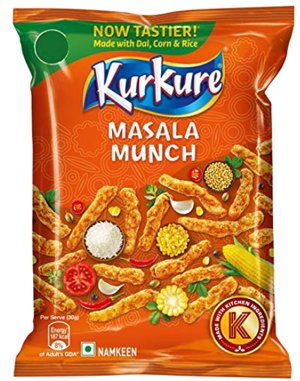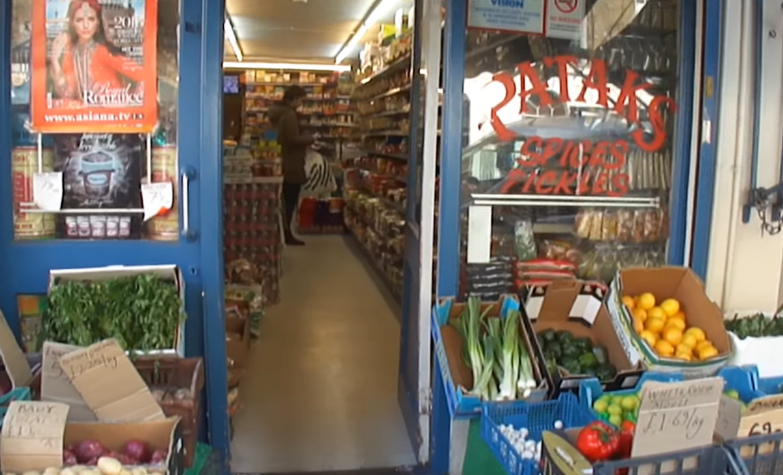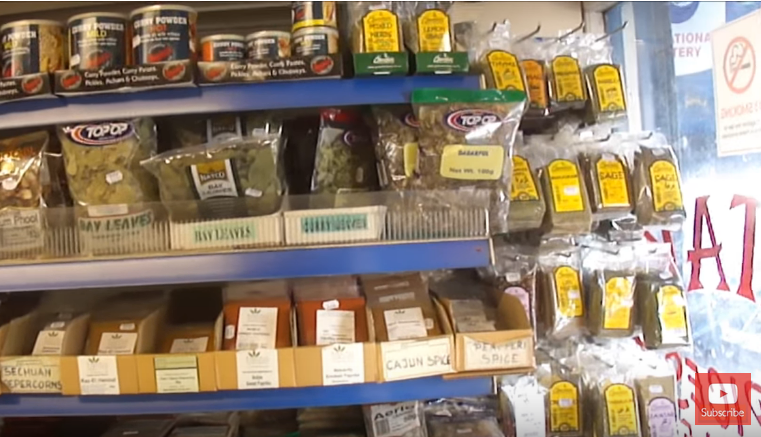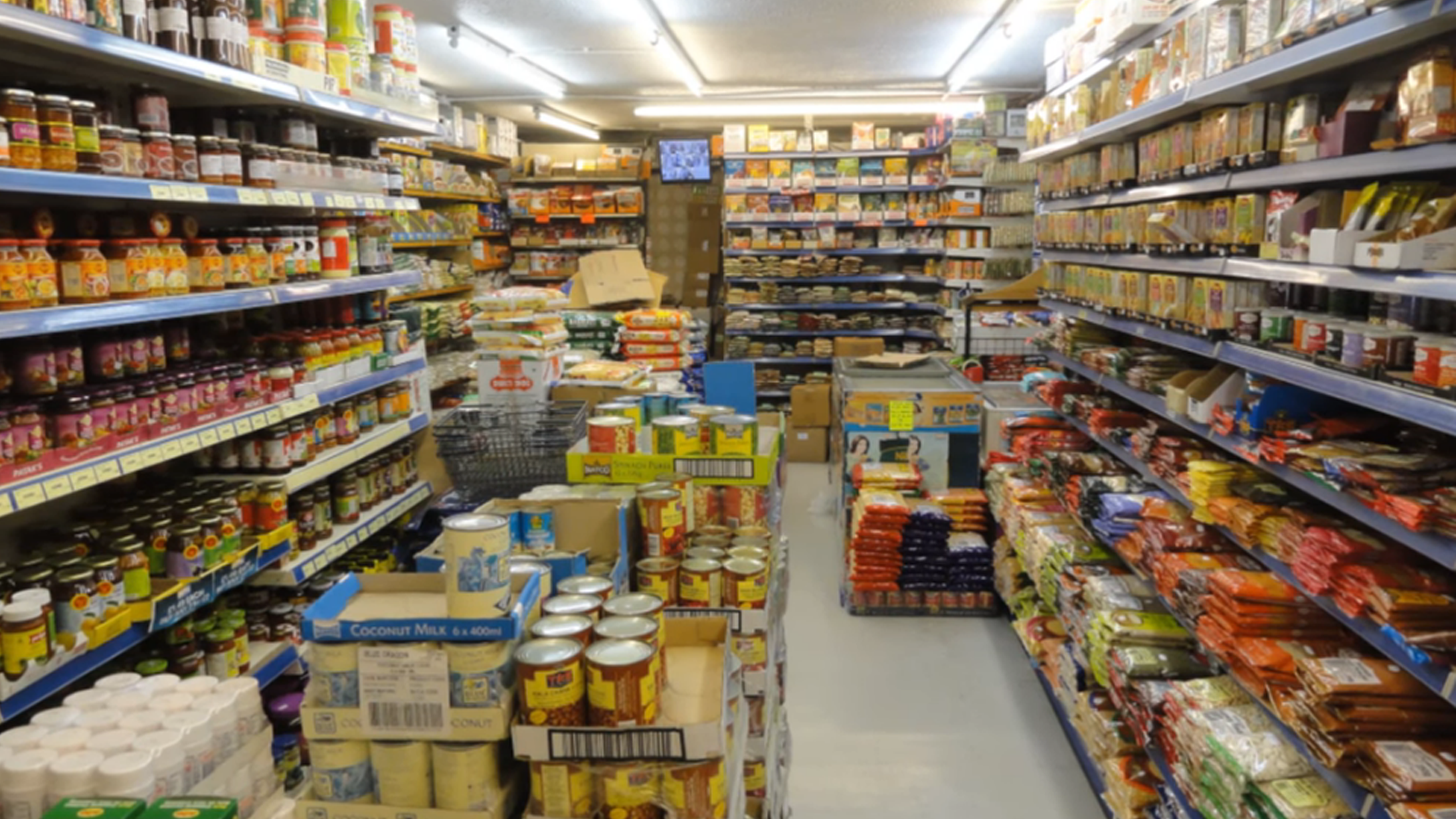In my first year in Scotland, where I had come from India to do a Ph.D., I ordered Hajmola Imli online. A non-medicinal digestive candy which is very addictive once you get used to it, it was a surprising choice to remember home by. In the next few months, I contemplated ordering packets of Kurkure, corn puffs with a distinctive masala. Living in a small university town which seemed insulated despite having an international student body, I was craving familiarity. The international-ness of the university was restricted largely to Europeans, an irony I suppose considering the Brexit vote that was to happen two years later.

I probably would not have done any of this, had I ventured outside the university to the closest city and discovered there the Indian grocery store. I am calling it ‘Indian’, though the one I now regularly go to is called Global Grocers and Traders. Another one calls itself Noor Halal. The first one is run by a second generation Indian migrant from Gujarat, an ace salesman who can sell you his entire shop if he so desires. The second, by someone who I think is from Pakistan (I am not sure because he is shy to talk but he calls me ‘baji’—‘elder sister’—a word used in a public context like this by Muslims from Pakistan, in my experience).
 Screenshot: YouTube
Screenshot: YouTubeThe Indian, or rather South Asian grocery store has a longstanding history in the UK, existing across big and small cities alike, including in Dundee in Scotland where I currently live. Even today when most things are an easy click away online, its appeal is unmatched. For most people in the diaspora, a visit to a local store like this is a necessity but also about pleasure. Apart from offering cheap supplies, it translates to the safety of familiarity, ‘a taste of our childhood’ as academic Anindya Raychaudhuri calls it in a BBC documentary on a similar grocery store in Glasgow.
I doubt I would have bought Hajmola or Kurkure from these shops, though; I probably would not have felt the need for them at all. For in the grocery store I discovered a feeling I did not know earlier when it came to food. In my first few visits, I enjoyed just gazing at the rows and rows of familiar food—daals (lentils) of all kinds, instant Maggi noodles, Parle G biscuits that taste best when dunked in tea, Lays chips, dosa mix, namkeen. Your everyday normal back home suddenly becomes a delicacy in a foreign country. Why do I go to the store only to walk around looking at the things that make up its shelves, and marvel at what all they stock? I tell myself that this nostalgia is innocent, it does not attach a value to anything, it does not say this food is better, only that it reminds me of something. Something I am away from, something whose relationship to me has fundamentally changed, and is still changing, but in what way/s I am still figuring out.
Nostalgia is not an emotion associated with the young, but in those moments when I closely gaze at the things of the Indian store, some that I haven’t tasted in years (colourfulfryums that were a staple in every birthday party in the nineties), I experience what feels like a younger emotion. It is similar to the non-cynicism of childhood, when everything was still new. It consoles me, and in that moment, I realise how dangerously attractive nationalism can be. Taken to an extreme degree this same emotion can become the distorted feeling of superiority of food, culture, tradition. Which says this culture is better, which searches for its ‘authentic’ past and roots, which seeks a static idea of self and by implication a static other. This is true not just for those living outside their home countries, but also for those who don’t feel at home where they live. Who feel threatened that what should belong to them is being taken away, or altered by immigration, even as they eat curry for take out every weekend.
In the popular Bollywood film from the 1990s, which my generation grew up watching–Dilwale Dulhania Le Jaayenge (‘The braveheart will take the bride’)—the NRI father living in London keeps talking of Indian roots and Indian culture. He gets a letter from home and says it ‘smells’ of home. Watching the film today, I realise how well Bollywood understood its (male) audience, because even a film not really known for being realistic recognised many contradictory truths about living abroad that rarely become apparent in Facebook updates, Instagram pictures or updates to friends and family back home. It understood the need to be seen (hence the corner shop the father owned), but it also understood, in its own way, that living in nostalgia can distort your idea of the world.
Living in London meant different things to the father, a different thing to the film’s female protagonist Simran, something else to her mother and something entirely different to the spoilt brat Raj. The film acknowledged these differences though it was never confused about whose side it was on, as it passed the baton from traditional patriarchy to a new, modern one that waited for the approval of tradition in order to be modern. Shah Rukh Khan’s Raj goes to India to be with Simran (Kajol) whose family is getting her married to someone else, but decides to first convince her father that he is the ideal man for his daughter. He does not agree to elope with her, like she wants to, he wants family approval first. She understands how oppressive family can be in a way that he does not.
What the film was not willing to explore, though it hinted at it through the difference in the material lives of Raj and Simran, were the hierarchies within the South Asian diaspora abroad, and how the relative equality and promise of a foreign land alters them (or not). Living here does not mean the same thing to me, a student from urban Delhi on a student visa, as it does to the second generation grocery store owner from Gujarat. And yet we share an experience I don’t share with my colleagues owing not only to our shared culture, language, food or race, but also to our experience of being seen as the same. And our experience of being in a country outside of the one of our origin. How do we hold on to who we are, and how do we change?
 Screenshot: YouTube
Screenshot: YouTubeWhen I walk into the corner shop near my house, the Scottish-Asian owner sees me differently from how he sees a white woman (and how he sees a brown man). She is allowed the drunken banter, the late night, he willinteract with her on somewhat equal terms. He is allowed everything. With me, there is an awkwardness, he is not so sure, because the template in his head for an interaction like ours is very different. For that male diasporic imagination, an Indian woman who is on her own is confusing. Some express this by being awkward, others by being over-familiar. Still others reject it outright. A year back, a female friend and I were buying beer from a shop near South bank. The South Asian owner insisted on an ID, judgement and disapproval written all over that interaction. It was not flattering the way an inquiry for ID usually is (who doesn’t like to be told they look younger than they are). Instead, I remember feeling mildly humiliated, mildly policed. Like he was telling us that we were somehow out of line, and he assumed this was his right by virtue of our common identity.
This is an entitlement that many South Asian men, across different classes, often end up displaying when they encounter women from their part of the world in a foreign country not their home. It is an exercise of control over what you have been taught should be controlled. But also of what you see as controllable when everything else is uncertain. It is another version of finding familiarity, of encountering home, and wanting to hold on to it. I understand where it comes from, but I cannot empathise with it because it is at my expense. There must be a struggle to break out of it too, I wish we heard and saw more of it. Even in Dilwale Dulhania Le Jaayenge, it was the men who held on to a rigid idea of India, while the women expressed discontent for they understood both home and abroad differently.
Back in the grocery store, sometimes I feel very conscious of the length of my short dress, or whom I have gone with. I feel eyes on me, he is watching me, he has noticed that today I have not come alone, that I am here with a white boy. This is a product of years of training, of always being aware of who’s watching you when, but also of being watched and judged to the point that you start doing it to yourself. I have a template in my head too. Even when we are in a space where we are free to start from zero, sometimes we hold on tightly to our taught behaviour.
 Screenshot: YouTube
Screenshot: YouTubeOn one of my first visits to this store, I was asked if I am interested in the non-vegetarian section, I knew instantly that he wanted to figure out where I am from and which community I belonged to. Everyone is sizing everyone up here, though it strikes me now that we never asked each other our names, surely the easier way of doing this. Eating or not eating meat is a clue to my identity, just like being called ‘baji’ is my clue to his. Indians, if they belong to upper caste Hindu families, are not supposed to eat meat, and especially not beef. This is where the idea that Indians don’t eat meat comes from, and because it is an upper caste narrative, it erases the injustice and claustrophobia of caste. To an outsider these specifics are invisible, but that does not mean they don’t exist.
But people look out for each other too in these spaces, perhaps more in the uncertainty of a Brexit world. Like the man who once suggested how I could save up on my electricity top-up, and then checked with me next time to see if I had done it. Or the brown woman at the counter, telling the black woman who had bought a lot of groceries —“if I had my car I would have dropped you home”. This was not just kindness, it was also identification. She could say that to her, she probably wouldn’t to a white customer, irrespective of class. Race works in complicated ways you have to keep a look out for if you want to understand it, just like caste does in India. Or gender everywhere.
Taste is acquired. All taste is. But taste is never innocent, it is also memory and familiarity, intimacy and association. As your palate grows, you find new tastes that appeal to you, that become familiar, become home even when new. Tesco chicken tikka masala, Britain’s national dish said to have been invented in a restaurant in Glasgow, feels similar to Delhi butter chicken. The UK version of the Indian savoury namkeen – the Bombay mix—is tasty even though it is entirely different from the Indian namkeen I would eat back home.
So when my mother asks if I want something from India, I say I don’t. Apart from discovering the grocery store, I have acquired new tastes now that comfort when needed, and have accepted the British version of Indian food on its own terms.
More than that, though, I have also come to realize that maybe everything is just the anticipation of it. Rather than the thing in itself. In fact often anticipation is the only thing there is. Like my long term nostalgia. And like the idea of Brexit, based entirely on anticipation; now that it has become a reality, no one knows what to do with it.







